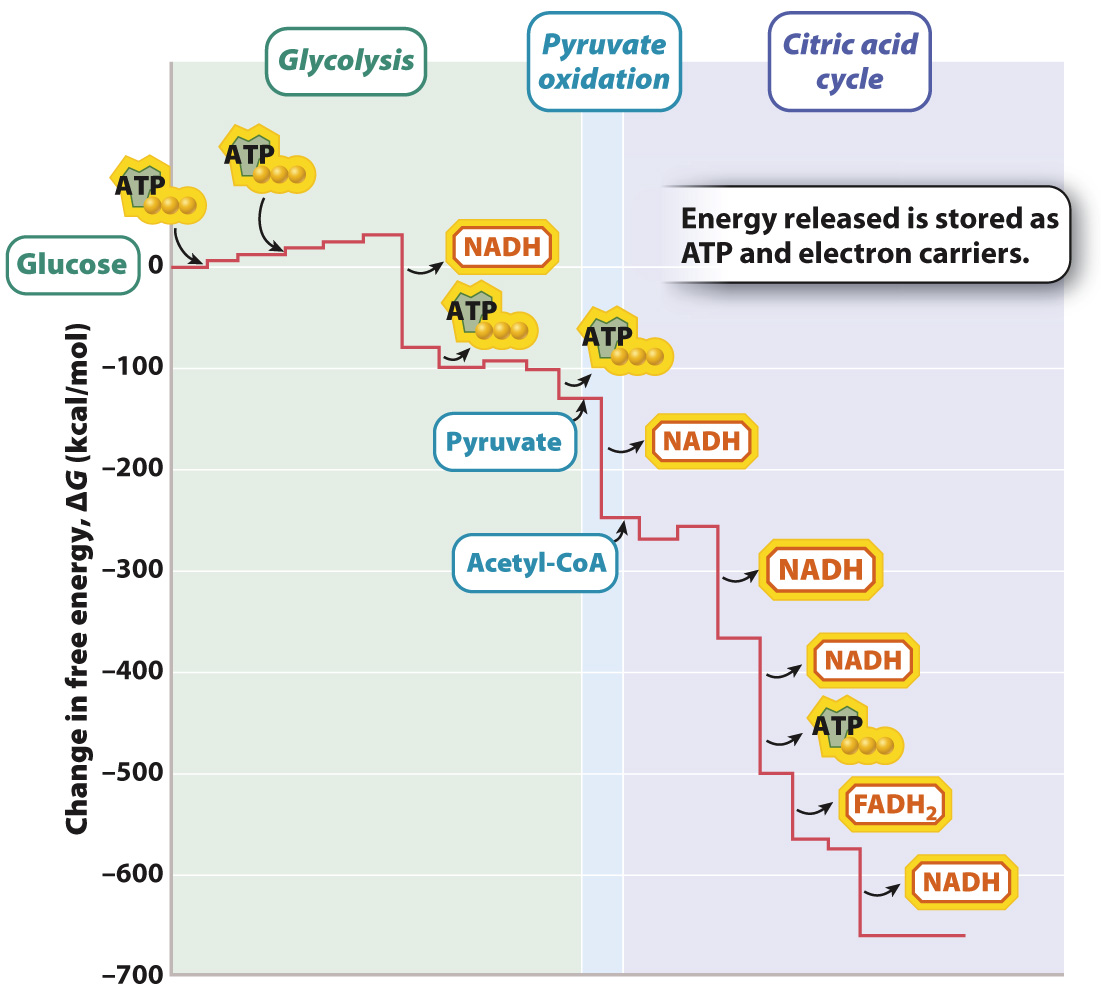Cellular respiration occurs in four stages.

Up to this point, we have focused on the overall reaction of cellular respiration and the chemistry of redox reactions. Let’s now look at the entire process, starting with glucose. Cellular respiration occurs in four stages (Fig. 7.3).
In stage 1, glucose is partially broken down to make pyruvate and energy is transferred to ATP and reduced electron carriers, a process known as glycolysis.
In stage 2, pyruvate is oxidized to another molecule called acetyl-
Acetyl-
Stage 4 is oxidative phosphorylation. In this series of reactions, reduced electron carriers generated in stages 1–
In eukaryotes, glycolysis takes place in the cytoplasm, and pyruvate oxidation, the citric acid cycle, and oxidative phosphorylation all take place in mitochondria. The electron transport chain is made up of proteins and small molecules associated with the inner mitochondrial membrane (Chapter 5). In some bacteria, these reactions take place in the cytoplasm, and the electron transport chain is located in the plasma membrane.
Fig. 7.4 shows the change of free energy at each step in catabolism of glucose. As you can see, the individual reactions allow the initial chemical energy present in a molecule of glucose to be “packaged” into molecules of ATP and reduced electron carriers. Note that the change in free energy is much greater for the steps that generate reduced electron carriers compared to those that produce ATP directly.
